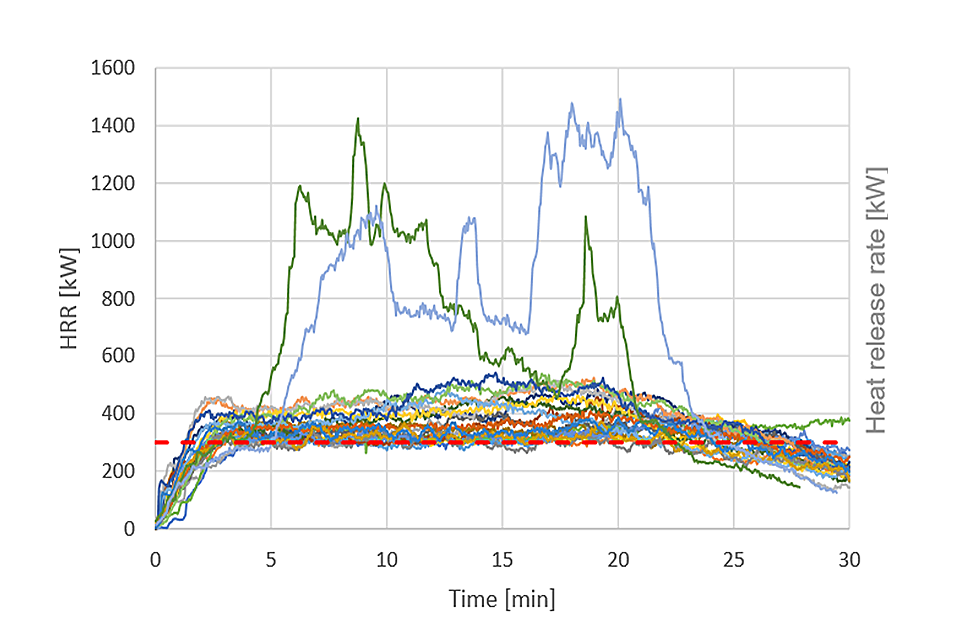Summary of research on non-ACM cladding
Updated 2 April 2020
In 2018, the Ministry of Housing, Communities and Local Government (MHCLG) commissioned testing into the burning behaviours of a range of non-ACM cladding materials. The aim was to identify if there were other types of cladding that burn like the type of metal composite material which was present on the Grenfell Tower, which was an aluminium composite material (ACM) with an unmodified polyethylene core (called ACM PE, or ‘ACM category 3’).
The tests were undertaken by the Building Research Establishment (BRE), on advice from the Independent Expert Advisory Panel (Expert Panel), set up in the aftermath of the Grenfell Tower fire.
The research showed that none of the materials tested performed the same or even similarly to the type of cladding believed to be on Grenfell tower, ACM PE. The diagram below shows the difference between the 2 ACM PE panels tested (the dark green and light blue lines) and the rest of the initial samples. All the graphs and sample list can be found in the report.

graph
The research used scaled-down experiments designed collaboratively with a group of experts, following a thorough review of the existing literature. Each experiment involved testing a type of cladding in a 2 by 3m mock-up wall. Materials tested included class B and class D high pressure laminate (HPL), brick slips, zinc and copper composite materials and, timber.
The findings of this research, as well as the large scale HPL tests carried out in summer 2019, support the advice provided to date by the Expert Panel, notably Building safety advice for building owners, including fire doors (published 20 January 2020), particularly that ACM PE, presents the most significant fire hazard.
The Expert Panel said:
We welcome the research carried out by the BRE. This research shows that ACM PE presents an unparalleled risk of fire in external cladding. Building owners should act to remove and remediate this cladding type on any building. This important research also confirms the advice previously issued regarding other cladding materials.
In March 2020, the Department announced a £1 billion building safety fund, aimed at remediating those other cladding types that present a significant risk of fire at 18 metres and above. This is in addition to the £600 million of funding the government has made available to remediate unsafe ACM (ACM PE) on residential blocks over 18 metres in height.
Building owners should refer to the advice from the Expert Panel, Building safety advice for building owners, including fire doors, and act swiftly should they have any concerns. If residents are concerned about the safety of their building, they should contact their building owner, usually via the managing agent in the first instance.
See further details on the methodology and results in the detailed reports.
